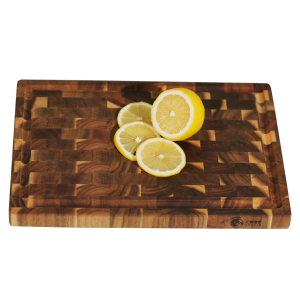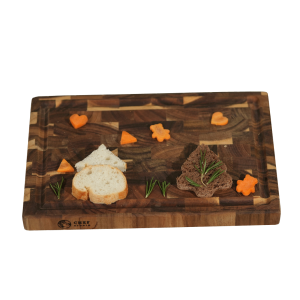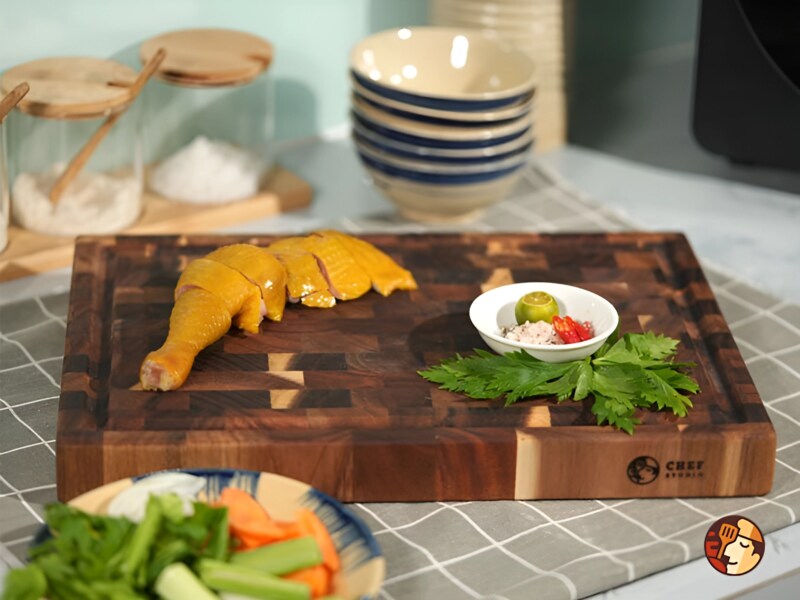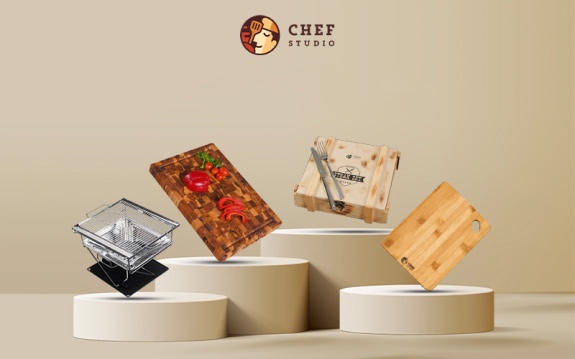Is acacia wood good for cutting boards?
Considering a cutting board upgrade? Acacia wood might just be on your radar. But before you make the leap, it’s essential to ask: Is acacia wood good for cutting boards? In this article, Chef Studio will explore the characteristics, pros, and cons of this popular material to find out if it’s the right choice for your culinary needs.
Characteristics of Acacia wood
Acacia wood possesses several characteristics that contribute to its popularity for furniture, cutting boards, and decorative items. To answer the question: “Is acacia wood good for a cutting board?”, let’s learn about the characteristics of Acacia wood:
Strength
Acacia wood is renowned for its robustness and durability, surpassing even hickory and oak in strength. Its natural tannins make it resistant to moisture, rendering it suitable for both indoor and outdoor furniture. With proper finishing and maintenance, acacia wood can endure for many years.
Variety
Acacia wood encompasses numerous varieties, each with its density and hardness. Hawaiian koa, for instance, is highly esteemed for its density, comparable to hickory.
Color
Acacia wood exhibits a range of hues, from yellow to golden brown, with aged wood acquiring a reddish or deep brown tone. Its ability to absorb stains effectively allows for easy color transformation, although prolonged exposure to sunlight may cause outdoor furniture to fade over time.
Texture
The texture of acacia wood varies across species, generally ranging from medium to coarse. Its grain can be straight or curvy, often with irregular patterns. This natural variability lends a rustic and distinctive charm to acacia wood pieces, appealing to those seeking a non-uniform aesthetic.
Sustainability
Acacia trees thrive in diverse climates worldwide and are known for their rapid growth and ease of cultivation. They require minimal fertilizer and pesticides due to their natural resistance to pests and fungi, making them a sustainable choice for wood sourcing.
In summary, acacia wood’s strength, color versatility, unique texture, and sustainable growth make it a favored material for various furniture, cutting boards, and decorative applications.
Is Acacia wood good for cutting boards?
Is acacia wood good for a cutting board? Are acacia cutting boards good? To answer these questions, let’s explore the pros and cons of acacia wood which makes cutting boards.
Pros
- Durable: Acacia wood is renowned for its durability, owing to its dense composition and natural resistance to rot and insects. Its sturdy nature makes it well-suited for enduring the rigors of daily use in the kitchen. While it may resist moisture to a certain extent, it’s essential to note that it’s not entirely waterproof. Proper care and maintenance can help prolong your Acacia cutting board lifespan.
- Sustainability: Acacia trees are known for their rapid growth, making them an environmentally friendly option for wood sourcing. Unlike slower-growing species such as teak, acacia trees can be harvested relatively quickly, replenishing the resource more rapidly. This aspect makes acacia wood a sustainable choice for those concerned about the environmental impact of their purchasing decisions.
- Aesthetic Appeal: Is acacia wood good for a cutting board? One of the standout features of the acacia cutting board is its stunning visual appearance. Ranging in color from warm yellows to rich mahogany tones, acacia wood exhibits a natural beauty that enhances the ambiance of any kitchen. Additionally, the wood’s unique grain patterns and occasional knots contribute to its rustic charm, appealing to individuals seeking a distinctive and character-filled cutting board.
- Ease of Maintenance: Maintaining acacia wood cutting boards is hassle-free, adding to their appeal for busy households. While they retain their color and finish well over time, routine cleaning with mild soap and water is typically sufficient to keep them in pristine condition. Occasional oiling can help nourish the wood and preserve its luster, although it may not be required frequently.
Cons
- Cost Consideration: Although acacia wood offers durability and aesthetic appeal, it often comes with a higher price tag compared to more readily available hardwood options like maple or oak. While the initial investment may be greater, it’s important to weigh this against the long-term benefits and longevity that acacia wood provides.
- Irregular Grain Patterns: Acacia wood’s grain patterns can vary significantly from piece to piece, resulting in a somewhat unpredictable aesthetic. For individuals who prefer a cutting board with a more uniform grain pattern, the irregularities of acacia wood may pose a drawback. However, many appreciate the unique character and charm that these variations lend to the finished product.
In summary, acacia wood is good for cutting boards. Cutting boards made from Acacia wood offer durability, sustainability, water-proof, termite-free, and aesthetic appeal, but they come at a higher cost than some hardwood cutting boards and may not satisfy those seeking a consistent grain pattern.
In conclusion, the above article has answered the question:” Is acacia wood good for a cutting board?”. However, it’s essential to weigh the pros and cons carefully, considering cost and grain irregularities, to determine if acacia wood aligns with individual preferences and requirements.








